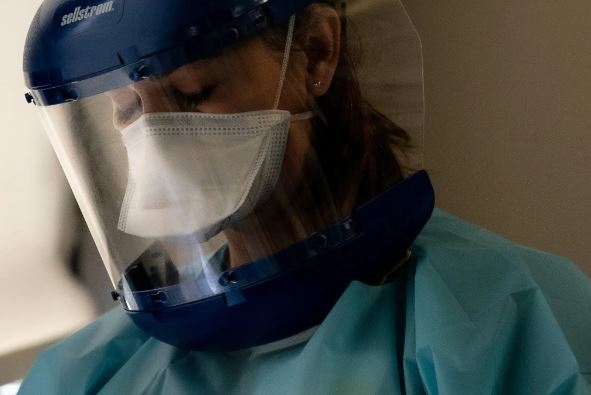A recent federal survey by the Centers for Disease Control and Prevention reveals a concerning trend of healthcare worker burnout, anxiety, and harassment after the peak of the Covid-19 pandemic. The research, which compared data from 2018 to 2022, highlights the significant staffing crisis in the healthcare industry, which faced immense challenges during the pandemic, such as long working hours, high turnover, violence in emergency departments, and public disputes over vaccines, masks, and treatments. This strain on the healthcare system has resulted in hundreds of thousands of medical workers leaving their jobs in recent years.
Dr. Debra Houry, the chief medical officer at the C.D.C., explained that even before the pandemic, hospitals and healthcare workers were dealing with issues of understaffing and burnout. Covid-19 exacerbated these challenges, creating an environment of tremendous strain on the healthcare system.
The survey tracked self-reported mental health symptoms among over a thousand adult workers, including 226 healthcare workers in 2018 and 325 in 2022. Healthcare workers reported a significant increase in poor mental health days in the month before the survey, rising from 3.3 in 2018 to 4.5 in 2022. Last year, less than 30 percent of healthcare workers described themselves as very happy, down from 2018. More than a third reported symptoms of depression, while over half reported symptoms of anxiety. The percentage of healthcare workers reporting workplace harassment more than doubled compared to the rate in 2018.
Rumay Alexander, a nursing professor at the University of North Carolina at Chapel Hill, emphasized that healthcare facilities reflect the challenges and issues present in society at large. The survey also found that nearly half of healthcare workers surveyed were somewhat or very likely to seek new job opportunities, which is a troubling sign for healthcare providers already struggling to retain staff.
Efforts by medical institutions to address the mental health and well-being of their employees have been inconsistent, according to experts. Dr. Amy Locke, the chief wellness officer at University of Utah Health, noted that medical workers, who are often poorly compensated, face a higher risk of overwork in environments with understaffing and immense financial and moral pressures. The financial challenges for health providers have also increased post-pandemic, making it difficult to allocate resources to employee well-being.
Nurses, in particular, have experienced significant burnout due to challenging working conditions. Many have been juggling excessive workloads and struggling to cope with mounting pressure.
The challenges extend to local health departments, which were often subjected to public scrutiny during the pandemic. Scott Lockard, the public health director of the Kentucky River District Health Department, explained that his department has been focused on helping employees regain their focus and energy. While healthcare workers continue to grapple with these challenges, addressing their well-being has become an imperative and complex issue for healthcare institutions.

